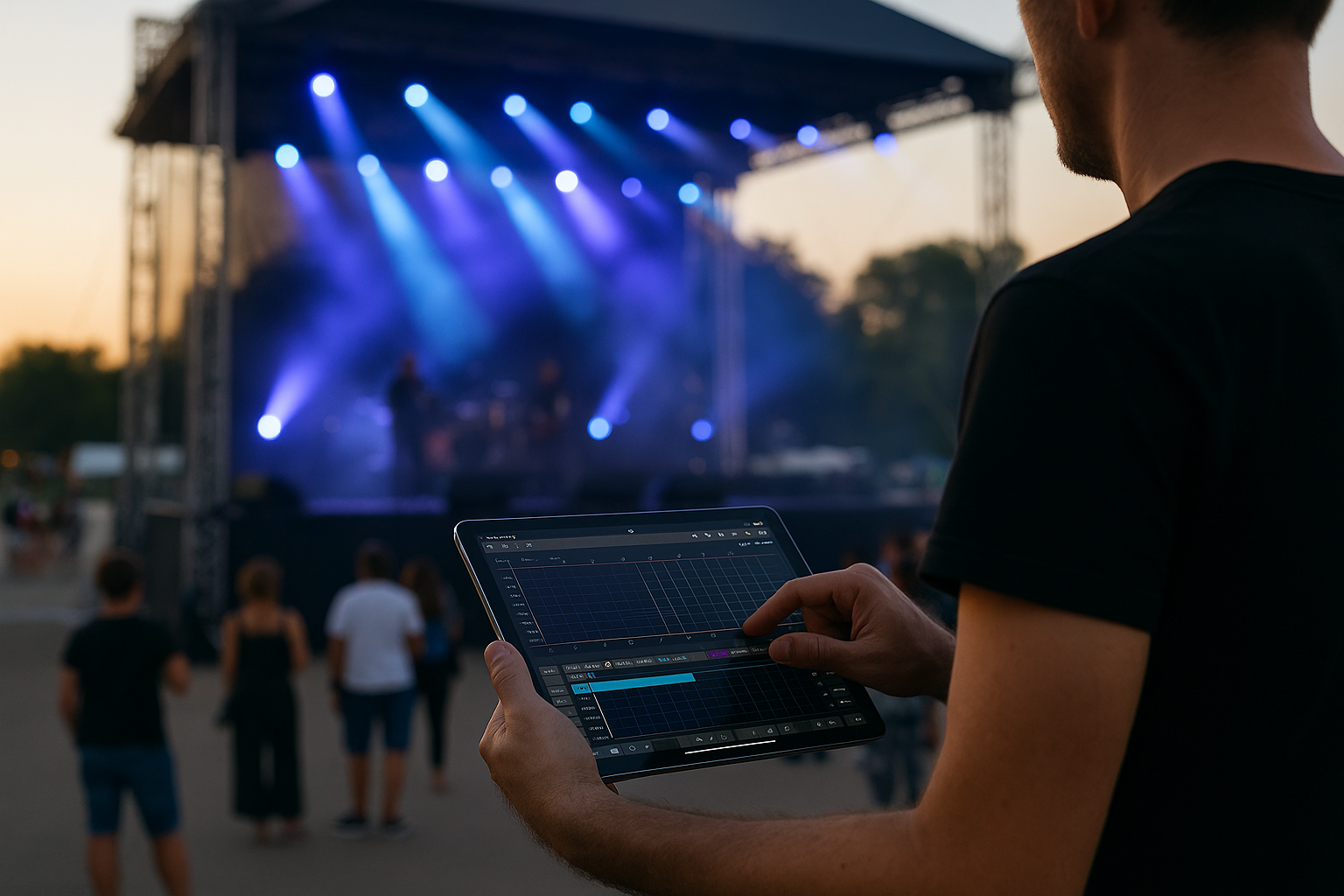Timecode in the Age of Portability
Timecode-based lighting control has traditionally been the realm of high-end consoles and fixed installations. But in today's fast-paced, location-flexible productions—from music festivals to touring dance shows—there’s growing demand for timecode lighting management on mobile control systems such as tablets, laptops, and compact touchscreen consoles.
The ability to precisely sync lighting cues with music, video, or automation is no longer exclusive to broadcast studios and arena-scale rigs. Thanks to evolving mobile software and lightweight interfaces, you can now manage frame-accurate lighting cues from your backpack.
Understanding Timecode: A Quick Recap
Timecode refers to a continuously generated digital signal that denotes the exact time position within a media track. It comes in several formats:
LTC (Linear Timecode) – Audio signal format (often sent over XLR).
MTC (MIDI Timecode) – MIDI-based, for music gear.
SMPTE Timecode – Industry standard, usable across lighting, audio, and video.
Lighting consoles and software systems listen to this signal to trigger cues precisely. For example: at 01:00:23:15, dim the house lights and activate a strobe hit.
Mobile Systems: What Has Changed?
Several key advancements make timecode integration on mobile devices feasible:
Powerful mobile CPUs now run full-featured control apps.
Wi-Fi and Bluetooth MIDI allow remote timecode signal input.
Compact DMX interfaces such as Art-Net/sACN nodes are easy to pair.
Cross-platform apps support Linux tablets, iOS, Android, and Windows devices.
Whereas once you needed a 10kg console, you can now run synchronized shows from an iPad, laptop, or even a smartphone—with proper planning.
Building a Mobile Timecode Workflow
Here’s how a robust mobile timecode-based lighting setup can be constructed:
1. Select Compatible Control Software
Choose a mobile-friendly control app that supports timecode cue triggering. Examples include:
Luminair (iOS)
Onyx Touch
QLC+
LightKey (macOS)
Chamsys MagicQ with Wing
Verify that the software can receive MTC or LTC either through hardware or virtual routing.
2. Route the Timecode Signal
You need a way to get the timecode into the mobile system:
Via Audio Interface – Route LTC via mini-jack or interface with phantom-lift.
Via MIDI over Bluetooth – For MTC-compatible systems.
Via Wi-Fi or Network MIDI – Especially on macOS or Windows tablets.
Some apps (like Luminair) can also generate timecode internally, which is helpful for rehearsals.
3. Program Timecoded Cues
Just like on large consoles, build a cue list with timecode stamps:
Use millisecond resolution for complex sequences.
Add delays or fade times within the cue data.
Program safety states for lost signal scenarios.
Benefits of Mobile Timecode Lighting
Extreme Portability
Ideal for mobile shows, pop-up installations, or dance performances in remote venues.Cost Efficiency
A tablet and interface are far cheaper than traditional desk setups.Speed of Setup
No need for bulky equipment—just plug and go.Redundancy Option
Use mobile systems as timecode backup for main consoles.
Limitations and Workarounds
While powerful, mobile timecode systems have limitations:
Limited IO
Mobile devices may only have one input or USB port. Solution: use hubs or pre-configured networks.Battery Dependency
Always run critical systems with power banks or UPS.Time Drift
Some apps may drift during playback. Solution: monitor LTC input with a visual overlay or external sync.Latency
Bluetooth MIDI can introduce lag. Prefer wired LTC or Ethernet MIDI when possible.
Advanced Sync Techniques
For tight professional setups, consider these enhancements:
Timecode Chase Mode
Your lighting app waits for incoming signal and automatically aligns cues.Audio Track Overlay
Some apps allow importing an audio track along with the cue list—helpful for programming.Multi-Device Sync
Use one device to receive timecode, and transmit show cues wirelessly to others via OSC or network DMX.Frame Offset Adjustments
For syncing with slow video processors or long-throw projectors, you can adjust cue times slightly forward.
Use Cases in the Field
Mobile Dance Company Tour
A choreographer uses a MacBook Air and QLC+ to fire lighting along with the music backing track via MTC.Festival Side Stage
An Android tablet with Luminair receives LTC from main FOH and triggers LED pixel effects with perfect sync.
Museum Art Piece
An iPad Mini runs timed fade transitions between lighting states based on an internal SMPTE loop—no operator needed.
READ MORE:





Blue Sea Lighting is an enterprise with rich experience in the integration of industry and trade in stage lighting and stage special effects related equipment. Its products include moving head lights, par lights, wall washer lights, logo gobo projector lights, power distributor, stage effects such as electronic fireworks machines, snow machines, smoke bubble machines, and related accessories such as light clamps.
Quick Links
For more questions subscribe to our email








